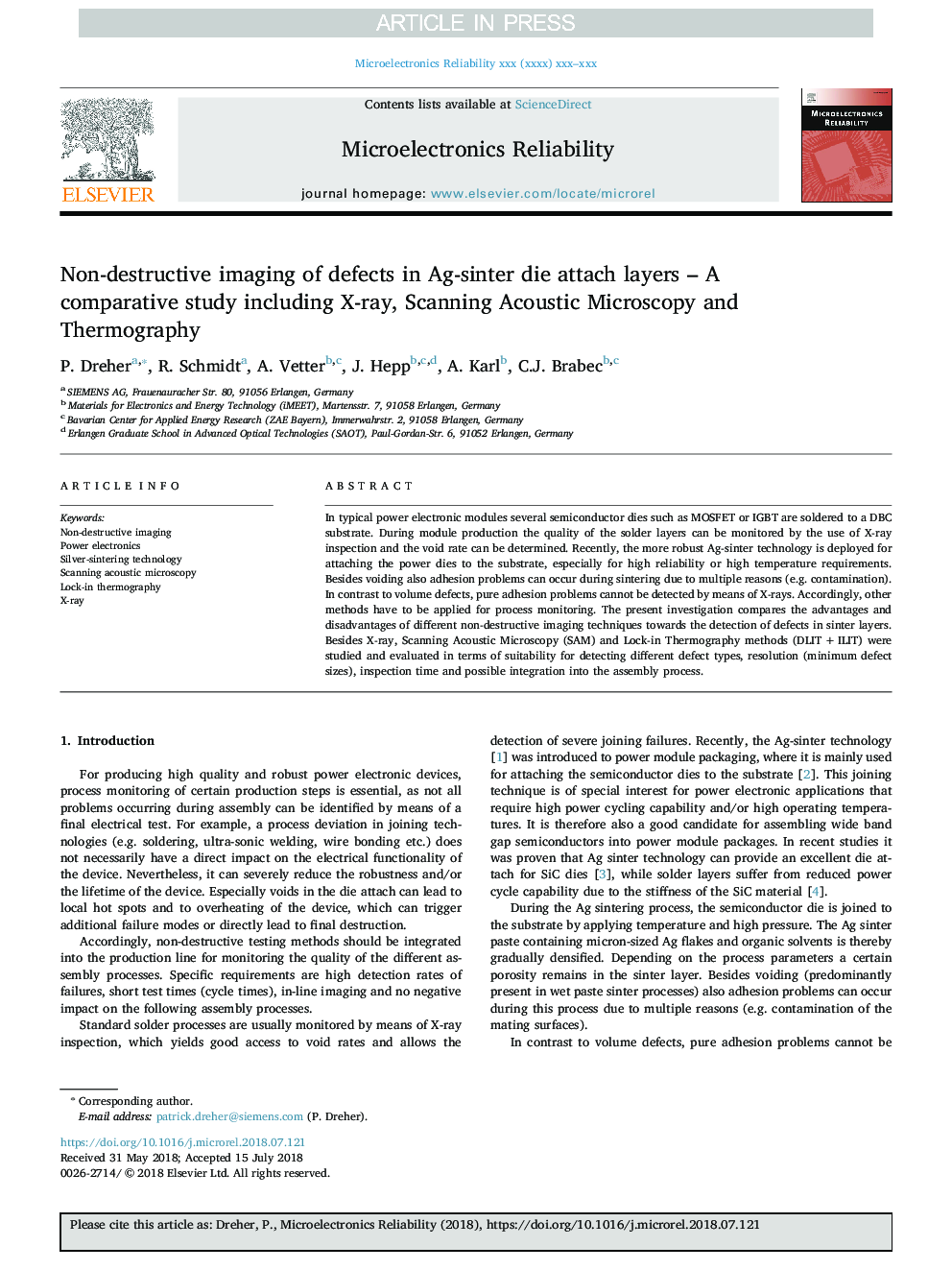| Article ID | Journal | Published Year | Pages | File Type |
|---|---|---|---|---|
| 11016498 | Microelectronics Reliability | 2018 | 6 Pages |
Abstract
In typical power electronic modules several semiconductor dies such as MOSFET or IGBT are soldered to a DBC substrate. During module production the quality of the solder layers can be monitored by the use of X-ray inspection and the void rate can be determined. Recently, the more robust Ag-sinter technology is deployed for attaching the power dies to the substrate, especially for high reliability or high temperature requirements. Besides voiding also adhesion problems can occur during sintering due to multiple reasons (e.g. contamination). In contrast to volume defects, pure adhesion problems cannot be detected by means of X-rays. Accordingly, other methods have to be applied for process monitoring. The present investigation compares the advantages and disadvantages of different non-destructive imaging techniques towards the detection of defects in sinter layers. Besides X-ray, Scanning Acoustic Microscopy (SAM) and Lock-in Thermography methods (DLITâ¯+â¯ILIT) were studied and evaluated in terms of suitability for detecting different defect types, resolution (minimum defect sizes), inspection time and possible integration into the assembly process.
Keywords
Related Topics
Physical Sciences and Engineering
Computer Science
Hardware and Architecture
Authors
P. Dreher, R. Schmidt, A. Vetter, J. Hepp, A. Karl, C.J. Brabec,
